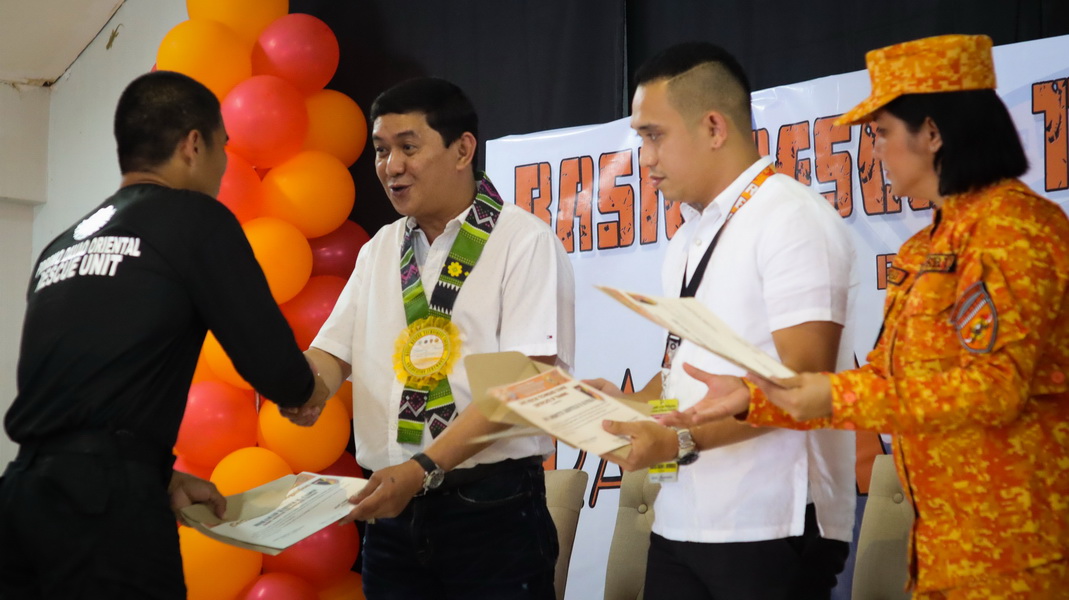DAVAO ORIENTAL – Governor Nelson Dayanghirang is more than determined to implement doable and convenient measures to create disaster-resilient communities with all stakeholders collaborating in ensuring a safer province of Davao Oriental.

Just very recently, 21 firefighters and 9 volunteers from the different parts of the region completed their 15-day Basic Rescue Techniques Training, making them members of a Special Rescue Unit (SRU).
“I’ve been telling the PDRRMO to conduct trainings so that we can effectively and expeditiously respond to disasters. I even strongly recommended trainings for the schools so the teachers and the students will know what to do in times of calamities. I believe that preparedness is the best weapon. With it, we can minimize damages and loss of lives,” the Governor said.

During the training, the graduates have learned the basics on rescue, including low and high angle rescue techniques. They were also trained how to rescue using basic equipment such as the rope and how to rescue during night and day time.

FO1 Marhll Felicilda from the Bureau of Fire Protection Davao City, who emerged as the top 1 among the graduates, said that it is also very important for the rescuers to ascertain their own safety, “for how can we rescue the victims if we are not safe ourselves? And as rescuers, we are tasked to really master our skills, develop whatever we have learned to save lives.”
Declaring the graduates was Davao de Oro Provincial Fire Marshal FC Inspector Randolf Arbutante.

Witnessing the occasion was FS Supt. Honee Fritz Abangan from the BFP-Regional Office with other commissioned officers and in supervision is the concurrent Davao Oriental Provincial Fire Marshal Christian Cena.
Meanwhile, as Davao Oriental is gearing up for more developments and continue championing in good governance, Governor Nelson Dayanghirang is making sure the province us resilient in any aspect of endeavors.
Being a visionary leader, Dayanghirang also added that he is also exploring other strategies to prevent disasters from happening. One them is the massive planting of mangroves in coastal areas.
“We have learned a great deal from typhoon Pablo. But we want more learnings and we can never be complacent. Talking with some reliable sources, including our structural engineers, planting mangrove was highly recommended. If we will experience big waves or tsunami, with mangroves planted, we can lessen the impact of the waves, we can lessen or weaken its strength if it rushes ashore,” he explained.

One recommendation also is to construct a concrete jackstone that will be thrown 150 meters away from the shoreline. It will also serve as a barricade to protect marine habitats. The only issue here is that it is very costly.
He said that all potential strategies are being explored to make communities safer and the environment become more sustainable. By Neela G. Duallo/Photo by Riza Golez




